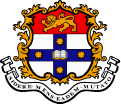
|
University of Sydney
School of Mathematics and Statistics
Applied Mathematics Seminar
Dr David Ivers
School of Mathematics and Statistics, University of Sydney
Time-Stepping Dynamical Dynamos in Spherical Geometries
Wednesday, 29th May, 2-3pm, Carslaw 173.The main magnetic fields of the larger planets, the Earth, possibly Mercury and the Sun are generated by the motions in electrically-conducting cores or shells. Motions which are sufficiently vigorous and asymmetric can act as self-exciting dynamos. Attempts are also underway by several research groups to develop laboratory rotating fluid dynamos. I will talk about pseudo-spectral dynamo codes, which I have been developing as a computational laboratory for the study of such dynamos. The prototype model underlying the codes incorporates the dynamics of an electrically-conducting rotating liquid spherical shell surrounded by a stationary electrically-insulating mantle and enclosing a solid inner core. The Boussinesq approximation is made, in which density variations are retained only in the buoyancy force. The convection is thermally driven by prescribed temperatures at the inner and outer core boundaries. The magnetic field, the velocity, the pressure and the temperature in the shell are governed by the magnetic induction equation, the heat equation and the Navier-Stokes momentum equation in a uniformly rapidly rotating reference frame with inertia, including the non-linear advective term, Coriolis, buoyancy, viscous and magnetic Lorentz forces. The magnetic field and the velocity are solenoidal. The magnetic, viscous and thermal diffusivities are uniform.
Results are presented for three benchmark models: non-magnetic thermal convection with a non-rotating inner-core; a convective dynamo with a non-rotating electrically-insulating inner-core; and a convective dynamo with a rotating electrically-conducting inner core, which can rotate freely about rotation axis of the mantle under the control of the axial viscous and magnetic torques at the inner-core boundary.